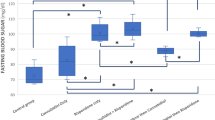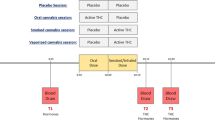Abstract
Opiate receptor-active peptide fragments (exorphins) have been identified recently in casein1 and gluten2 hydrolysates, and morphine has been found in bovine and human milk3. To determine whether similar peptides or alkaloids occur in other foodstuffs, we have screened potential sources using a rat brain homogenate assay to detect opiate receptor activity. We report here that instant coffee powders from a variety of manufacturers compete with tiitiated naloxone for binding to opiate receptors in the rat brain membrane preparations, with no significant difference between normal and decaffeinated coffee. The receptor binding activity resembles that seen with opiate antagonists, in that there was no change in the half-maximal effective dose (ED50) in the presence of 100 mM Na+; on bioassay, the activity was similarly shown to be antagonistic and specific for opiate-induced inhibition of twitch. Preliminary characterization of the activity reveals that it has a molecular weight (MW) in the range 1,000–3,500, is heat-stable, ether-extractable, not modified by enzymatic digestion with papain, and clearly separable from caffeine and morphine on TLC. As its concentration in an average cup of coffee is five times the ED50, these data suggest that drinking coffee may be followed by effects mediated via opiate receptors, as well as effects of caffeine.
This is a preview of subscription content, access via your institution
Access options
Subscribe to this journal
Receive 51 print issues and online access
$199.00 per year
only $3.90 per issue
Buy this article
- Purchase on Springer Link
- Instant access to full article PDF
Prices may be subject to local taxes which are calculated during checkout
Similar content being viewed by others
References
Chang, K.-J., Killian, A., Hazum, E., Cuatrecasas, P., Chang, J.-K. Science 212, 75–77 (1981).
Zioudrou, C., Streaty, R. A. & Klee, W. A., J. biol. Chem. 254, 2446–2449 (1979).
Hazum, E., Sabatka, J. J., Chang, K.-J., Brent, D. A. & Findlay, J. W. A., Science 213, 1010–1012 (1981).
Pert, C. B. & Snyder, S. H. Proc. natn. Acad. Sci. U.S.A. 70, 2243–2247 (1978).
Pert, C. B., Pasternak, G., & Snyder, S. H. Science 182, 1359–1361 (1973).
Arnold, M. A., Carr, D. B., Togasaki, D. M., Dian, M. C., & Martin, J. B. Life Sci. 31, 1017–1024 (1982).
Snyder, S. H., Katims, J. J., Annau, Z., Bruns, R. F., & Daly, J. W., Proc. natn. Acad. Sci. U.S.A. 78, 3260–3264 (1981).
Kosterlitz, H. W., Lydon, R. J. & Watt, A., Br. J. Pharmac. 39, 398–413 (1970).
Author information
Authors and Affiliations
Rights and permissions
About this article
Cite this article
Boublik, J., Quinn, M., Clements, J. et al. Coffee contains potent opiate receptor binding activity. Nature 301, 246–248 (1983). https://doi.org/10.1038/301246a0
Received:
Accepted:
Issue Date:
DOI: https://doi.org/10.1038/301246a0
This article is cited by
-
4-Caffeoyl-1,5-quinide in roasted coffee inhibits [3H]naloxone binding and reverses anti-nociceptive effects of morphine in mice
Psychopharmacology (2004)
-
Ethanol ingestive behavior as a function of central neurotransmission
Experientia (1989)
-
Failure of coffee to inhibit the pharmacodynamic activity of morphine in vivo
Experientia (1986)
-
Coffee and opiate receptors: Another cup of coffee?
Nature (1983)
Comments
By submitting a comment you agree to abide by our Terms and Community Guidelines. If you find something abusive or that does not comply with our terms or guidelines please flag it as inappropriate.



